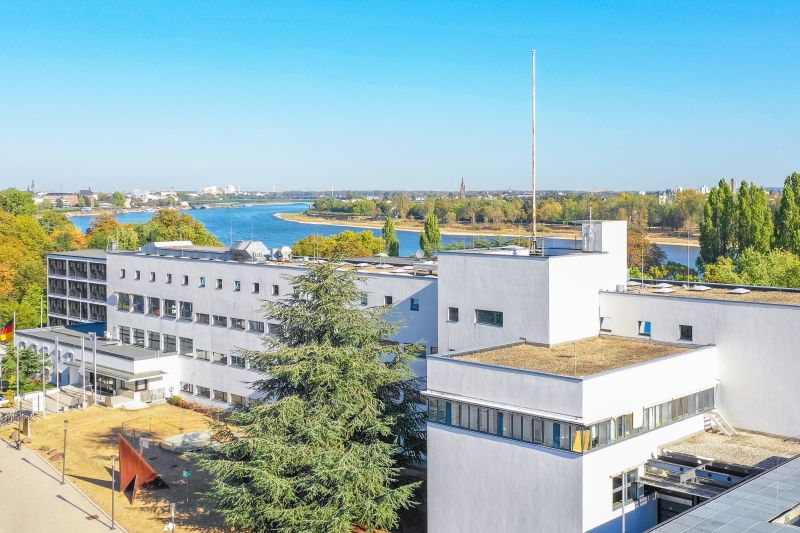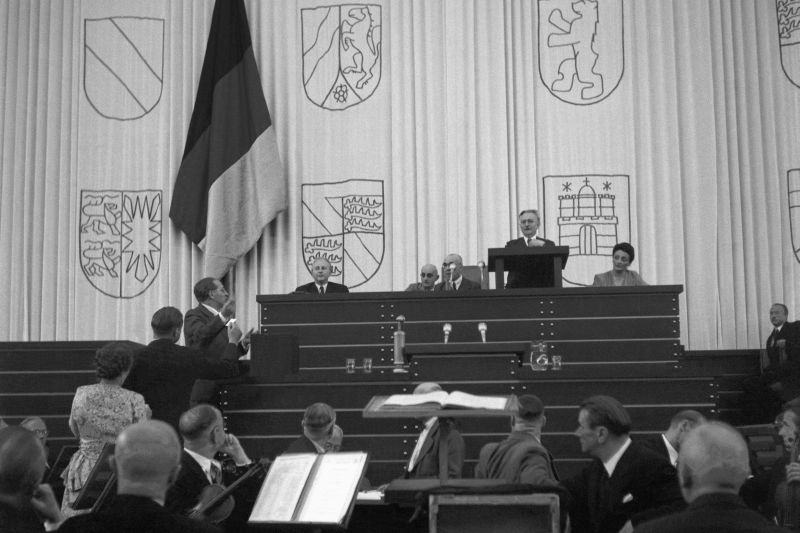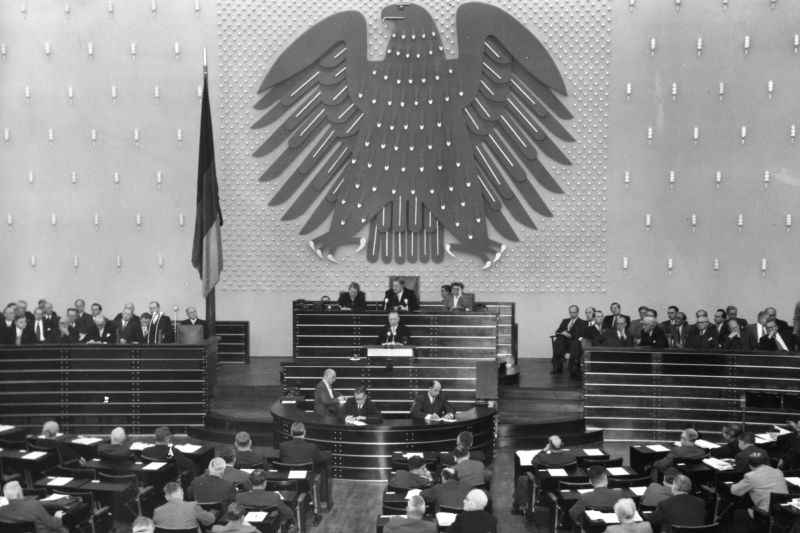Nonetheless, the emphatically pragmatic architectural style of the structure sent a signal. Schwippert avoided what he termed "false and elaborate representation", up to and including for the appointments. Among the works of art in the Bundeshaus are the Federal Eagle (1953) by Ludwig Gies, whose work the Nazis called degenerate art. Gies renders the eagle as a round, fulsome and domesticated-looking bird whose nickname was the “fat hen”. The entrance of the office wing that was added to the Bundeshaus in 1951 is presided over by an Odo Tattenpach stone relief called “Ascending Phoenix” – a work that symbolically depicts the German nation as a mythical bird that burns and yet rises from its ashes rejuvenated. From the parliamentary chamber’s flagpole (located behind the rostrum) the black, red and gold banner of the 1832 Hambach Festival hangs. The banner was also the national symbol of the Frankfurt National Assembly in 1848 and of the Weimar Republic.
Until 1986, this parliamentary chamber was the nerve centre of parliamentary democracy in Germany. It was here that major debates were held on matters such as German rearmament (1952), the statute of limitations on Nazi crimes (1965) and Willy Brandt's policy of détente (1972). In this chamber, Herbert Wehner and Franz-Josef Strauß engaged in angry exchanges with each other, and Waltraud Schoppe’s 1983 speech about “everyday sexism” caused a furor. And it was here that Federal President Richard von Weizsäcker gave an historic speech on the occasion of the 40th anniversary of the end of World War II. In 1987 the German parliament moved to a temporary facility, while a new plenary hall was being built on the site of the old one. Construction began in 1988. The new building was dedicated in 1993, and after Parliament relocated to Berlin in 1999, the building was incorporated into the newly built World Conference Center Bonn.
The chairs from the old building, which author Wolfgang Koeppen once described as “a large classroom with tidy school desks”, are now part of the permanent exhibition at the Haus der Geschichte. You can even try them out there, and vote on the next speech that is given in Parliament.


